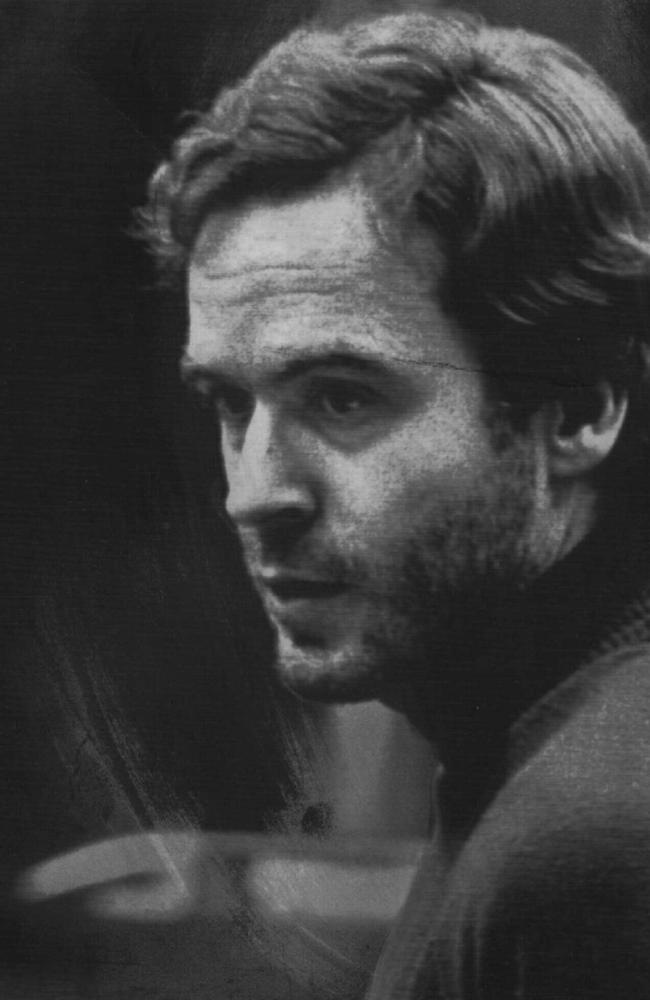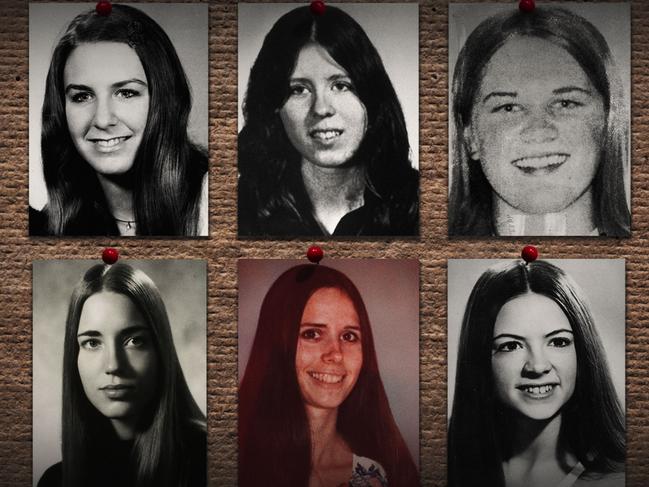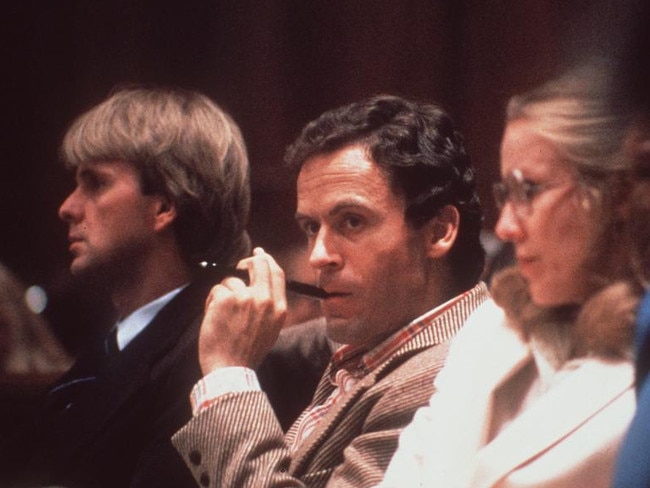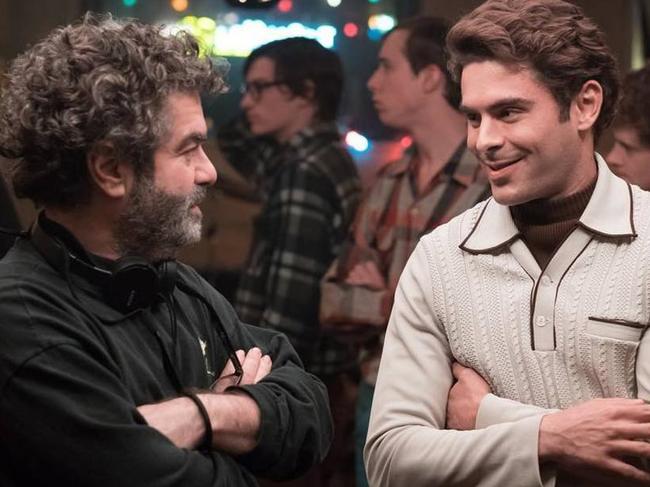Ted Bundy: inside the mind of America’s most charming serial killer
He’s one of history’s most famous and confounding serial killers: a handsome, intelligent and charismatic figure capable of the most shocking acts of evil. Here’s why Ted Bundy continues to fascinate.
Crime in Focus
Don't miss out on the headlines from Crime in Focus. Followed categories will be added to My News.
He was found guilty of several murders. Later, he confessed to many more. Ted Bundy is one of history’s most famous serial killers. Now, the world is fascinated by the tale of how such a ‘normal’ guy could be such a brutal killer.
Understanding Ted Bundy has become the obsession of many criminologists, psychologists and armchair investigators since his 1970s killing spree.
He had a charismatic personality. He had raffish good looks. But, otherwise, he had a persona that made him seem entirely ‘normal’.
It was the combination of two characteristics that made him so appealing — and dangerous — to the young women who were his victims.
His total toll is unknown. He confessed to more than 30. But some detective place the figure as high as 90,
How did Bundy manage to kill so many before being caught? And how were so many deaths not even linked to him before he confessed?
Now, 100 hours of interview tapes with the serial killer have been released. And they give a deeply disturbing glimpse of his mind, and methodology.
“People want to think those who do evil are easily identifiable,” the director of a new Netflix documentary series examining the killer says. “Bundy tells us that those who do evil are those who often people we know and trust the most.”

BEING TED BUNDY
In 1966, Bundy appeared to be just an average student studying Chinese at the University of Washington. He dropped out.
A few years later he returned. This time to study law and psychology.
He was handsome. He had a circle of friends. And he had what appeared to be a promising career ahead of him.
He did not fit the stereotypical serial killer profile. Nor did he have any apparent reason to kill.
RELATED: The forensic breakthroughs that could end crime
Bundy came across as a romantic, full of charm.
It made him magnetic to many young women.
Conversation with a Killer: The Ted Bundy Tapes documentary director Joe Berlinger described Bundy’s lasting grip on society: “He taps into our most primal fear: That you don’t know, and can’t trust, the person sleeping next to you.”
Sleeping next to Bundy was Elizabeth Kloepfer.
They had met at the University of Washington in 1969. He was a student. She was a single mother working as a secretary.
Kloepfer described him as being a wonderful boyfriend. He was attentive. He was supportive. He was a doting father-figure for her young daughter.
They were together even as the slaughter unfolded.
RELATED: Inside the mind of a female thrill killer
Bundy acted as though he was obsessed with her. He told reporters while on death row: “I was terribly jealous of her. I used to agonise about losing her. I used to just torture myself.”
Ultimately, Kloepfer would contribute to his downfall.
She grew to suspect there was more to her prince charming than his winning smile.
But she never suspected he was a necrophile — someone sexually attracted to corpses.
Nor that he’d been decapitating his victims.

KILLING TIME
Despite his confession, it is still not known when Bundy committed his first murder.
Some suspect it was about 1970. Others believe it was as late as 1974.
Young women were disappearing. But, in the era of free love and women’s liberation, police were complacent.
But they had their chance to end the killing spree in November 1974.
Seven young women had been attacked in Washington. They all looked very similar to each other. Almost all had long, dark hair and fine features.
RELATED: The life, times and making of Charles Manson
Then, after Bundy moved to Utah to study law, similar young women began vanishing there and in nearby states.
Bundy’s girlfriend, Elizabeth Kloepfer, was disturbed.
She secretly approached her local county sheriff’s office, saying she feared Bundy had connections with several young women who had vanished.
The police did not act.
Despite her suspicions, Kloepfer maintained her relationship with Bundy.
His charm had not diminished. He treated her well, even though she was suspicious of his faithfulness.
She even began plans to marry him — even though Bundy was at the time having an affair on the side with a divorcee.
Then, on August 16, 1975, Bundy was pulled over in his Volkswagen by a Colorado patrol. His car contained objects that roused the officers’ suspicions — including a ski mask, gloves, rope and pantyhose. He was detained for a time, but released.
RELATED: What drives women to kill?
Later, police impounded his Volkswagen. They found hair linked to two missing young women. In 1976 he was charged with murder. But Bundy managed to escape out a courthouse library window. He was caught eight days later.
Then, on December 30, 1977, he escaped again.
He immediately began killing again.
One of his victims was a 12-year-old girl. She was abducted from a high school. Her remains were found seven weeks later.
Then police pulled over a stolen Volkswagen. In it was Ted Bundy.

TRIAL AND EXECUTION
After Bundy’s arrest, Kloepfer again opened up to police.
She detailed the causes of her suspicions.
She also helped prove Bundy was not with her at the time of any of the known murders.
But Bundy had only been charged with kidnapping. He had been granted bail.
And, despite her fears, Kloepfer again maintained her relationship.
Bundy loudly, insistently — and convincingly — proclaimed his innocence.
So they continued to live together as his trial approached.
The proceedings were televised.
It was the first serial-killer case to ever receive such attention and broad dissemination.
It became a spectacle. And Bundy revelled in the limelight as he attempted to defend himself.
However, he was convicted on four counts of murder, and three counts of attempted murder.
Bundy proclaimed his innocence all the years he was on death row, submitting appeal after appeal.
It was only the night before his execution that he began to talk.
He confessed to 36 murders committed across seven different US states.
But it’s believed he may have truly killed at least double that number.
Bundy refused his last meal.
Then, on January 24, 1989, he was led to the electric chair.
Outside, thousands gathered to cheer his demise.

IN A KILLER’S MIND
Between 1980 and 1981, journalists Stephen Michaud and Hugh Aynesworth spent 15 months interviewing Bundy.
It was a time when he was still insisting his innocence. But he was enticed to talk about the crimes as though he was a witness.
It’s this perspective that offers so much material for Conversation with a Killer.
In his own words, Bundy said his pleasant demeanour concealed “the most cold-hearted son of a bitch you’ll ever meet”.
RELATED: How AI can expose your darkest intentions
The documentary reveals the deep resentment and anger Bundy felt against his mother. He had been raised thinking his abusive grandparents were his parents, and his mother his sister. He didn’t know who his real father was.
“He felt inadequate, which gave him rage,” Berlinger told Vice. “His psychotic breakdown occurred at a time of social progress with regard to women being more liberated, so ironically the social progress of the 60s, that made women stronger and more independent, actually tapped deeply into his own inadequacy.”
But Bundy was also smart.
“Here’s a guy who could compartmentalise his life. That’s why it’s so bone chillingly scary. It’s not some freak who emerges from the shadows, it’s a guy who had a family unit with Elizabeth Kloepfer and her daughter; a guy who in addition to his compulsion to kill also craved a sense of normalcy. I want to understand that.”
Conversation with a Killer: The Ted Bundy Tapes pulls them together as a “deep dive into the cradle to grave of Ted Bundy, really dissecting his crimes and methodologies," director Berlinger says in a statement.
Berlinger has also made a biopic.
Extremely Wicked, Shockingly Evil, and Vile covers the killer’s murders and trial through the perspective of his girlfriend, Elizabeth Kloepfer. Starring Zac Efron as Bundy, the film premiered at the Sundance festival.
Originally published as Ted Bundy: inside the mind of America’s most charming serial killer


